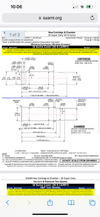WestKentucky
Member
I have looked online and can’t find the answer to this… what is the difference between chambering a barrel and “chambering” a full length sizing reloading die?
I know that the die needs to be ever so slightly tighter than the barrel chamber because A. Brass springs back a bit coming out of a loading die B. Ammo has to be small so that it feeds rather than presses into place, and C. Brass springs back minimally after firing which allows it to eject out of the chamber, so it has to be smaller to ever spring back instead of get stuck.
If a person were to cut a rifle chamber, then take the reamer down a couple thousandths in diameter then chamber a hard steel die blank would that work for sizing?
I’m just trying to wrap my brain around the mechanical and machine tool differences in the two very similar but also very different cuts. For simplicity let’s say it’s a steel die not a carbide ringed pistol die.
I know that the die needs to be ever so slightly tighter than the barrel chamber because A. Brass springs back a bit coming out of a loading die B. Ammo has to be small so that it feeds rather than presses into place, and C. Brass springs back minimally after firing which allows it to eject out of the chamber, so it has to be smaller to ever spring back instead of get stuck.
If a person were to cut a rifle chamber, then take the reamer down a couple thousandths in diameter then chamber a hard steel die blank would that work for sizing?
I’m just trying to wrap my brain around the mechanical and machine tool differences in the two very similar but also very different cuts. For simplicity let’s say it’s a steel die not a carbide ringed pistol die.


